With advancements in infrastructure and construction in today’s world, material selection is an important aspect that bears the impact of efficiency, sustainability, and cost. Out of the many options offered, HDPE (High-Density Polyethylene) pipes have also become increasingly used, more so the six-inch pipes. What characterizes these pipes is their durability, flexibility, and corroding properties, making them suitable for a broad range of applications, from transporting industrial fluids to domestic plumbing. This blog talks about the many uses and advantages of 6-inch HDPE pipes, which show us their versatility and how extraordinary the pipes can be in accomplishing several project requirements. Be it any engineer, a contractor, or even any person looking for options for a personal project at home, gaining insight into how 6-inch HDPE pipes can be beneficial can be quite useful for making sound decisions.
What is HDPE pipe, and why is it important?
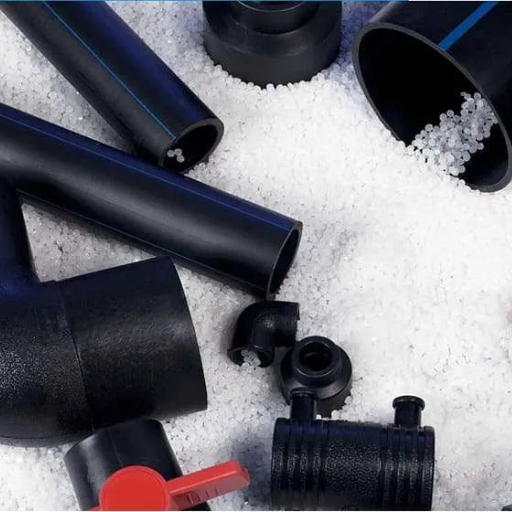
When we refer to an HDPE pipe, we narrow it down to its physical characteristics and say it is a high-density polyethylene pipe. Where the pipe has a very wide construction with a strong strength-to-density ratio. In most industries, this type of pipe has immense relevance due to its attractive properties like chemical corrosion resistance, high-pressure tolerance, and lightweight for easy installation. The significance of an HDPE pipe lies in its suitability for multiple applications such as water and gas supply lines, sewage, slurry, and so on. This reduces the need to repair the pipes, in the opinion that they are able to perform in excessively harsh environmental circumstances without failure, contributing to the overall viability of the project and its cost.
Understanding polyethylene pipe
knowledge of polyethylene pipes like HDPE is important if there is a need to make construction and plumbing. In a variety of construction works, it is possible to apply the combination of strength properties, flexibility and chemical resistance of these pipes. Whether it is a water supply line – which has to be secure or industrial waste management, the performance of polyethylene pipes under various pressure and temperature is of high engineering quality. For many years I have been working with these pipes allowing to recommend them for projects that require durability and cost efficiency over years, which most of the times surpass the expectations of the customers’ requirements.
Benefits of using HDPE pipe in construction
I can say without a doubt that the usage of HDPE pipes in construction projects has several advantages. First level, let us talk about the resistance to floods and weathering, or durability. Approval and endorsement are given primarily because these pipes possess high endurance and resistance to corrosion or decomposition brought out by unfavorable environmental conditions. In the second place, there is a dimensional structure that allows for throughput and flexibility of HDPE pipes. Unlike other materials, these pipes may bend around and change forms in several ways on the other hand don’t snap which is important when dealing with tough geographical locations.
Another significant advantage is the economy, price is mentioned as a disadvantage. While the first outlay may be a bit higher than other materials, economy in maintaining costs over a long period of time and longevity of HDPE pipes can save out in the end. Normally, the pipes are exposed to several different chemicals, so they will be working in conditions where HDPE pipes will make it quite valuable to make use of pipes.
These pipes have low weight and as such they are easy to carry and install thus saving on labor time and costs during installation. At last, there is the environmental aspect. Many people see HDPE pipes as an environmentally friendly solution, noting that the pipe is largely recyclable and its production is less polluting than that of metal pipes. Considering all these variables – longevity, adaptability, economy, resistance to chemicals, ease of putting up the structures, and environmental protection – there is no surprise why in most construction programs the HDPE pipes are the most preferred types.
Applications of 6-inch HDPE pipe in Various Industries
Due to their useful properties, 6-inch HDPE pipes are widely used in many sectors. Below is a summary of their applications:
- Water Supply Systems: With tremendous durability and flexibility, 6-inch HDPE pipes are increasingly being used for municipal as well as residential water supply systems. It is corrosion free and leak free which ensures a steady and dependable water source and these pipes can effectively transport considerable amounts of water supply.
- Agriculture: In agriculture, these lines of pipes play a central role during irrigation. Their characteristics enable them to be placed on rough and uneven surfaces and have the ability to withstand different chemicals such as fertilizers and pesticides and not rot.
- Sewage and Drainage: Due to HDPE’s inherent properties of resistance to chemicals and strength, these pipes are also effective for use in sewage and drainage systems. They can withstand the corrosive elements of waste water and have longevity which reduces the maintenance of such products to a minimum level.
- Industrial Applications: Due to their strength and resistance to different chemicals, these pipes are widely used in the transportation of chemicals and industrial waste. Any transportation of such chemicals can be done without the hazards of leakage or failure of the pipeline.
- Mining: In the mining industry, water and slurry transport lines frequently employ 6-inch HDPE pipes. These pipes are strong and flexible and have the capacity to withstand tough terrains that commonly occur in mining sites.
- Telecommunications and Electrical Conduit: The protective conduits for electrical cables and fiber optic lines and HDPE pipes are next in the hierarchy. Such lines are durable enough to survive harsh weather conditions which could otherwise interfere with connectivity and electrical transfer.
In all these applications, the key parameters of HDPE pipes: durability, flexibility, chemical resistance, and environmental friendliness are well leveraged and, therefore, are regarded on each and every occasion throughout various sectors.
How does polyethylene hdpe compare to other materials?
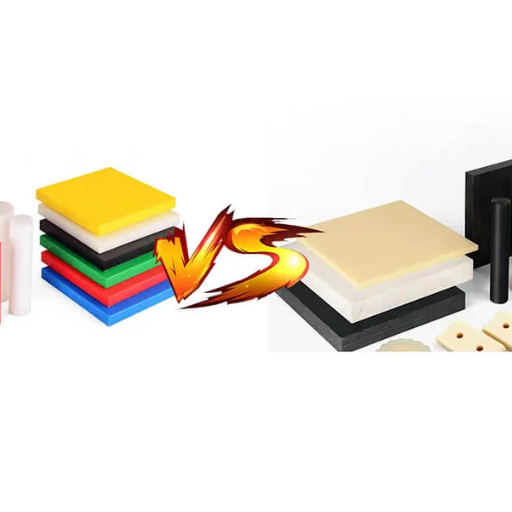
High density polyethylene (HDPE) materials are among the most distinct materials due to their high impact strength, ease of handling, and chemical resistance properties among others. Compared to older materials such as PVC and metal, HDPE is more environmentally friendly as it is recyclable and has higher corrosion resistance. When comparing metal pipes and HDPE, the latter is more practical and economical while achieving the required performance levels. It is also lightweight, which contributes to its ease of going around hilly areas during installation. Moreover, it has less maintenance costs, that in return lowers the operational expenses. Reliable and flexible, HDPE is mostly preferred in applications where normal materials cannot work best.
Comparing poly vs plastic pipes
There are a number of applications for which polyethylene HDPE, or poly as it is commonly known, is arguably superior. Its flexibility means it can withstand ground movements without fracturing, which is vital in seismic regions. Furthermore, poly’s ability to resist chemicals enables it to do quite well in environments where corrosive materials are present. On the other hand, common plastic pipes like PVC tend to be more brittle and can crack under pressure or unfavorable environmental conditions. Probably the best long-term advantage of poly usage is decreased maintenance and enhanced longevity, making it quite worthwhile in many industries.
Advantages of high-density polyethylene
Through a plethora of interactions within the industry, I can robustly state that high-density polyethylene (HDPE) is of tremendous value owing to a number of important factors that merit its application:
- Durability: No other material can rival HDPE materials. They do not suffer from cracks and breaks under frequent environmental stress such as movement of the soil or the application of pressure from outside.
- Corrosion Resistance: One of the impressive features of this material is HDPE is it’s ability to withstand corrosive substances. This characteristic is advantageous for the industries where pipes are used for carrying aggressive liquids or where the environment is corrosive.
- Flexibility: Installation of HDPE pipes is quite easy as they can be installed over rough topography or congested areas while maintaining their shape. This feature lowers the installation period and cost or labor greatly.
- Cost Efficiency: The HDPE material is economical in the long run because it has a long life span and minimal required maintenance. You cut costs that arise from the replacement and repair of less durable materials, as would be the case.
- Environmental Impact: HDPE is recyclable and weighs less, which means that production and transportation have less impact on the environment. These features improve the overall sustainability of projects that will use this material.
All of the above parameters further justify the use of HDPE as a preferred material for different structural applications providing advantages that go well beyond the capital cost.
Corrosion resistance: A key feature of HDPE
The corrosion resistance of HDPE (High-Density Polyethylene) is arguably one of its strongest features. Allow me to explain this further so that you can appreciate why this feature is important and how it benefits a number of industries:
- Chemical Stability: HDPE does not react with a lot of chemicals which is particularly appealing in industries where there are corrosive fluids such as strong acids and alkalis. This means that pipelines made of HDPE do not corrode nor degrade thus do not suffer from leaks or defects, even when transporting aggressive substances.
- Longevity: Because of its inherent resistance to corrosion, HDPE pipes have a longer lifespan in comparison to metallic pipes that undergo oxidation and degradation with time. This durability leads to less frequent replacement cycles which translates to benefits in both time and resources for businesses.
- Consistency in Performance: HDPE is able to retain its design and working properties through a range of temperatures and changes in the environment. The reliability of this material is particularly beneficial for industries where operational activities depend on repeatability.
- Reduced Maintenance Costs:Due to the properties of HDPE, such as resistance to corrosion, HDPE does not require regular inspections and repairs. This not only reduces maintenance costs but also decreases the amount of downtime which brings about more efficient operations.
To sum up, due to the corrosion-resistant nature of HDPE, it allows for long-term functionality, which results in cost efficiency and reliability of operations, which is critical in the case of modern industries .
What are the common uses of 6-inch HDPE pipes in irrigation?
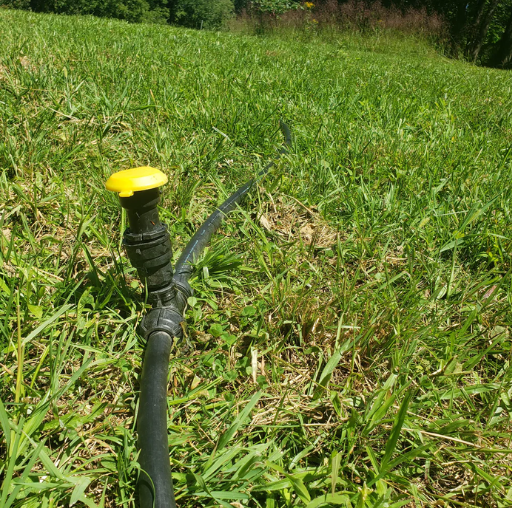
In this regard, to elaborate further on the different uses of 6-inch HDPE pipes in the irrigation practice. These pipe types are very adaptable and very reliable; therefore, they are widely used in different types of irrigation.
- Water Supply Lines:As HDPE pipes with a 6-inch diameter are frequently employed as main supply lines in irrigation systems, their large size facilitates bulk transporting of water from a supply point to different areas within the irrigation system.
- Lateral Irrigation Systems: These pipes are in addition used in lateral irrigation systems that distribute feeder water directly to the ground or crop fields. Since HDPE is flexible, it is easy to install these pipes with minimum disturbance to the existing environment.
- Distribution Lines:6-inch HDPE pipes in large scale farming operations would also be used as bulge distribution lines or bulge trunk lines as water is moved throughout the farms. This ensures that water is delivered to all requested areas of the farm at the same time and uniformly.
- Integration with Drip Systems: When employed with a drip irrigation system, these pipes facilitate effective water delivery while eliminating wastage of water. Because of the strong nature of the material HDPE, these installations will be effective and waterproof for extended periods of time.
- Lift and Pump Systems: HDPE pipes are most suitable for use on lift and pump irrigation systems which require strength and flexibility to deal with pressure variations and easily accommodate different pumping systems.
Myriad applications have been presented, which further highlight the flexibility and reliability of HDPE pipes, particularly 6 inch size, in facilitating irrigation systems which are efficient and sustainable.
Pipe for water supply in agricultural settings
In agricultural contexts, 6-inch HDPE pipes are very effective for water distribution due to their strength, pliability, and effectiveness at traversing various irrigation systems. They are suitable for primary supply pipes, lateral systems, strong distribution networks, and interconnection with both drip and pump systems because they can withstand extreme pressures and are impervious to the elements. Their usage guarantees integrated and holistic water resource management across various agricultural setups.
Using HDPE water supply pipe for efficient irrigation
I am able to state with assurance that the use of HDPE water pipes for irrigation systems is a revolution in modern agriculture. In my own experience with these pipes, I believe they offer an amazing combination of rigidity and flexibility that helps farmers devise strong irrigation structures that conform to the physical realities of the area. Since HDPE tubing also has the capacity to withstand high internal pressure and extreme weather conditions, it contributes to continuous water provision while minimizing the odds of producing system failures. More so, the versatility of dripper tubes enables integration with a variety of advanced irrigation techniques, resulting in enhanced water delivery and reduced wastage. In my work, the applicability of 6-inch HDPE pipes has been significant in increasing agricultural productivity and sustainability in addition to making them cheap forms of irrigation. In my view, every farm that seeks efficiency and resilience must consider using these pipes.
Integrating pipe pe pipe into existing systems
When adding PE pipes into prebuilt systems, careful consideration needs to be employed to avoid problems relating to effectiveness of the system. In my professional opinion, it is prudent to carry out a reasonably detailed assessment of the existing systems to assess factors that may limit compatibility, such as connection methods employed and pressure requirements. Transition fittings can be used to connect PE pipes to non-PE systems effectively. Additionally, while an allowance needs to be made for thermal expansion of PE materials, this should not lead to unduly forcing the joints. Another factor that may simplify the integration of PE pipes is the training in their usage and installation. If PE pipes are fitted into predesigned systems without construction or real remodeling issues FG construction, they will enhance the reliability and functionality of the existing systems.
How do you choose the right fitting for HDPE applications?
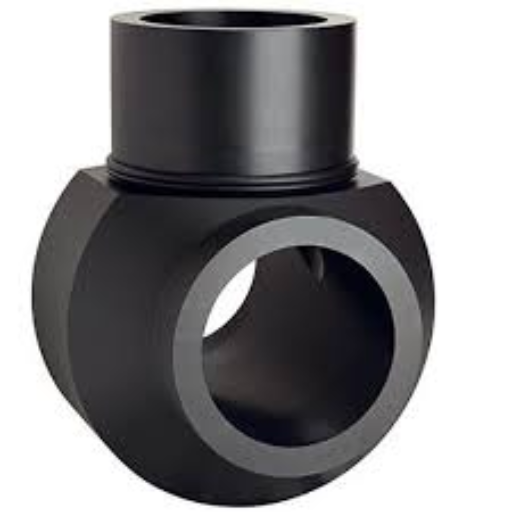
The selection of fittings for HDPE applications remains a pivotal point in guaranteeing a correct implementation. Here’s how I do it, step by step:
- Pressure Rating: This should be the first step in understanding the application and the pressure rating assigned to the application. The fitting should be equal or greater than the pressure capabilities of the pipe in order to avoid breakage or any leaks.
- Size Compatibility: While ensuring that the fitting is of the right size for the pipe may seem easy, but it is very crucial. If sizes are not correctly matched, connections can become troublesome and inefficient.
- Type of Connection: Different construction sites may need a connection of different types, such as butt fusion, electrofusion, or mechanical connectors. It is worth mentioning that the type of connection depends on the requirements of the particular system and maintenance practices.
- Chemical Resistance: Further, the environment in which the pipes and fittings will be used should also be taken into consideration. Some chemicals are known to react with some materials and therefore it becomes necessary to select a fitting material which will not react with the chemicals.
- Thermal Expansion: This issue is particularly pronounced in HDPE, where the materials expand when heated or shrink when cooled; hence, the fitting chosen should not alter the bonding of the pipe whilst being able to withstand thermal fluctuations.
- Installation Environment: Lastly, the area where the fittings would be placed should also be taken into account, for instance, exposure to sunlight or weather changes. Select fittings that are competent against these factors for effective performance in the long run.
Considering these factors will enable you to select the most suitable fittings for your HDPE pipe application while maintaining efficiency, safety, and durability.
Types of fitting available for 6-inch HDPE
Answering Your Questions on HDPE Pipe Fittings
As an industry expert, I understand that selecting the correct fittings for your 6-inch HDPE pipe is crucial for successful execution. Let us now examine the types of fittings while taking care of all the required parameters:
- Pressure Rating: It should be checked whenever a fitting is being selected that it should meet or exceed the pressure requirements of the pipeline. As an example, if the pressure capability of the pipeline is 150 psi, the fitting must possess the ability to withstand this pressure, or even more, to mitigate possible breakdowns in the future.
- Size Compatibility: There should be the usage of fitting which is of the same nominal size of the pipe as in this case a 6-inch fitting is used so that proper fusing can take place. Correct sizing reduces the chances of leaks as well as inefficiencies from occurring within the system.
- Type of Connection: Based on the work, you may require the following:
- Butt Fusion: Best suited for high strength and permanent joints.
- Electrofusion: Provides a secure joint, although, in some cases, it is difficult to install or repair.
- Mechanical Connectors: These are ideal for temporary occupations and quick access to maintenance.
- Chemical Resistance: Rigorously choose compatible materials such as polypropylene or polyethylene in order to avoid chemical erosion with the fittings.
- Thermal Expansion: High density polyethylene fittings provide accommodation for thermal expansion and contraction which occurs naturally. This flexibility is essential to minimize joint stress from temperature fluctuations.
- Installation Environment: Evaluate whether there are conditions of direct sunlight or extreme weather that may affect the fittings’ installation. Use UV-stabilized fittings to withstand such conditions.
Taking these parameters into account, it is possible to select the most appropriate fittings that guarantee the reliability, longevity, and efficiency of 6-inch HDPE pipe systems.
Ensuring Compatibility with Diameter HDPE Pipe
When considering diameter compatibility with HDPE pipes, the following aspects must be taken into consideration:
- Diameter Tolerance:
- Details: The tolerance of fittings and connections required as per the HDPE pipe is determined by its nominal diameter. ‘On the one hand, it is understandable that there are some standards, for example, ANSI or ISO, that serve to maintain stability.’ Simply speaking, these technical documents standardize the work performed on the entire production cycle, from the drawing to the ready-made products.
- Data: As concerns the 6-inch nominal diameter, permissible deviations depending on the region, for example, the country’s standards – there are certain tolerances that are allowed in the manufacture of the fittings and installation hardware. Check such regulations in order to achieve full data accuracy required for matching fittings.
- Pressure Rating:
- Details: Ensure that all components, including the pipe and the fitting within the distribution system, have similar pressure ratings. Such measures greatly reduce chances of pressure failures arising from the use of the mismatching components.
- Data: For instance, a 6-inch HDPE pipe may be rated for SDR 11 or SDR 17, which are different pressure tolerances. So, be sure that your fittings can support such tolerances.
- Wall Thickness:
- Details: Since the pipe’s compatibility with sockets is directly related to its wall thickness, HDPE pipes with heavy wall thickness require more robust sockets.
- Data: The wall thickness of 6-inch pipes can be influential regarding the flowing capability of the pipe system as well the pressure that the system can withstand, but wall thickness has to be well SDR rated so that they can work together.
- Material Grade:
- Details: The grade of materials used for both pipes and fittings must be the same in order to make sure the chemical and physical properties would work as expected.
- Data: Some of the more common grades, such as PE4710 or PE100, provide varying characteristics of durability and resistance and therefore guide in good selection of such materials for pairing.
- Thermal Coefficient:
- Details: Be wary of heat expansion and contraction by making certain that the expansion and contraction coefficients are uniformly maintained across the various materials an assembly would be composed of, Perhaps, it is equally important to note that the temperature will impose limitations on the maximal useable dimensions of the assembly.
- Data: HDPE features expansion factor as a constant linear function with the general value equal to 1.0 x 10^-4 in/in/°F. Confirm that pipes supporting these parts would have the same characteristics to minimize thermal stress.
Through evaluation of these parameters, the user is able to maintain operational integrity and efficient performance of the entire system of 6 inch HDPE pipes.
Installation tips for PE pipe systems
Before putting in the PE pipe systems, confirm that the necessary trenching is undertaken so that a level base for the pipes is achieved without putting additional strain on them. While joining the pipes, make sure the correct method is used, be it butt fusion or electrofusion, based on the project’s requirements. Watch out for temperature and humidity in the surroundings and modify the installation methods to allow for expansion and contraction of the pipes due to changing weather conditions. Wipe down pipes and fittings as well to reduce the chance of a leak in the connection. Insurance of the system’s durability and efficiency demands that appropriate standards and codes are always followed.
What factors affect HDPE pipe price?
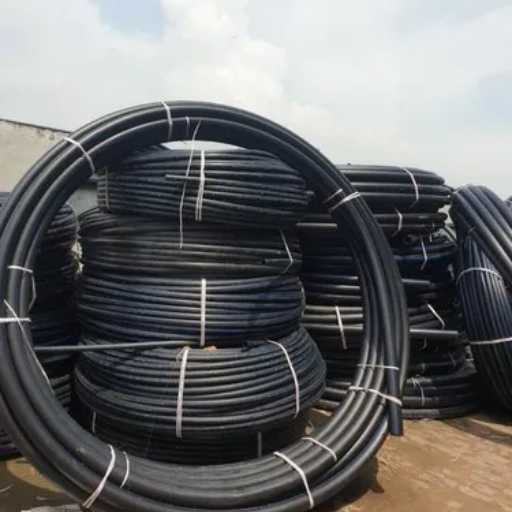
If I may speak my industry as an expert, I would say that there are a number of factors that are key in influencing HDPE pipe pricing. Their primary drivers, along with other factors, are the costs of raw materials. Changes in the price of polyethylene resin will directly affect the pricing of the pipes. Further, manufacturing costs such as energy, labor, and other costs account for cost variations. On the other hand, the interaction between demand and supply also determines the price, which could be high if demand is great or supply is much lower. Costs such as transport or logistics also have some impact on prices, especially in areas that are far from factories. Finally, other qualifications like pipe diameter, wall thickness, and other certificates or standards can cause price discrepancies among HDPE products.
Impact of diameter HDPE on cost
It is important to note that the diameter of the HDPE pipe has a crucial impact on its pricing. My observation was that the larger the diameter, the higher the price tends to be. It is rather self-explanatory considering the cost involved in raw material procurement, which certainly is more than the proportionate cost incurred in production. For example, in small diameter pipes, less polyethylene resin is needed, and the production cycles are shorter, nevertheless, pipes with large diameters will require significantly greater resources and time. A comparison that I saw recently suggested that a 200mm HDPE pipe should cost approximately twice as much per meter as a 100mm pipe. Also, such differences are not limited to the raw material costs but also the requirement for specialized equipment to fabricate and support large pipes. In addition, the cost of transportation increases relative to the size of the pipe as larger pipes require more space and safekeeping measures during transportation.
Key Considerations for Pipe Products in Your Budget
There are a number of other factors that need to be taken into account, and these can greatly influence the costs and the monetary expenditure on the project while budgeting for pipe products. Here is a definitive checklist of items to consider for such projects:
- Material Type and Quality
- Different materials have different characteristics in terms of costs and benefits including PVC, HDPE, or metals. For instance, HDPE pipes may be more expensive considering the raw materials but they are very flexible and durable which could lead to lower maintenance costs in the long run.
- Pipe Diameter and Length
- As has been noted earlier, pipes of large diameters are relatively more expensive not only in terms of the material employed but also the level of manufacturing complexity and transportation. Review the requirements of the project so that extra overheads are not incurred on unnecessary sizes.
- Resist buying lengths that would need extensive jointing and make cutting wastage so as to enhance both material and labor costs effectiveness.
- Pressure Ratings and Specifications
- These economies are only available for considerations with low pressure ratings, which in turn has the consequence of necessitating thicker walls and, hence, increased material and production costs. Always confirm project requirements in order to procure adequate pipes but without excessive specifications which would increase costs unnecessarily.
- Transportation and Logistics
- As distance and size increase, so do the costs. Hence, the delivery method and timing need to be taken into account in a bid to minimize costs.
- Look into bulk purchasing to potentially mitigate transportation expenses through economies of scale.
- Installation and Labor Costs
- Manufactured materials, equipment, and skilled labor for installation should all be taken into account along with regard to wages and gross margins.
- More complicated or bigger installations might require specialized subcontractors together with specialized equipment, hence increasing costs further.
- Maintenance and Lifecycle Costs
- Take into account expected upkeep requirements and durability, as cheaper resources might lead to higher costs afterward because of repair necessities or shorter duration.
Considering the data-driven insights that you provided and factoring these factors in your budget improves the decision making in such a way as to choose the pipe products which are suitable for the project and its costs.
How management system certification influences pricing
Certifications regarding management systems have a large impact on pricing through business improvement, quality of the product, and adherence to standards. Certified firms are most of the time able to develop efficient processes and minimize waste, which reduces costs related to production. Moreover, certification gives the company credibility, making it easy to raise prices because of the value attached to the firm’s perception. There are cases, however, where having a center is able to tap into new client bases that need or prefer certified clients. With the undertaking and the sustaining of the certifications come costs, and hence, this becomes a strategic advantage in the sense that the price and the stature are able to increase over a long period of time.
Where can I find pipe for water supply solutions?
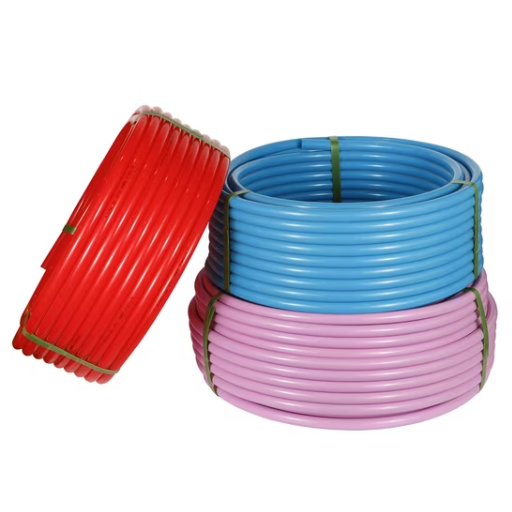
- Local Plumbing Supply Stores
- The supply of water supply pipes is offered by many plumbing supply depots for a variety of purposes. Such clients are able to consult with trained personnel directly, thus guaranteeing them to obtain the right material and size for the task at hand. Data from the American Supply Association revealed that around 40% of contractors source materials from local merchants because of proximity and assistance.
- Online Retailers
- According to Statistics, in the following years, such trends as the expansion of online sales of plumbing goods are going to consolidate growing by 15 % per annum. The statistics suggest, buying of plumbing materials online is becoming more and more preferred it is clear that customers enjoy the online shopping experience of both the range and the ease in which it gives them.
- Manufacturers’ Direct Contact
- Some manufacturers sell their products directly on their websites or via the customer service line. This method is usually able to save some costs and provide a level of customization. As per IBISWorld, direct sales contribute around 25% of the market share in the plumbing pipes industry due mostly to reduced cost of intermediaries.
- Specialized Distributors
- Regional and local distributors focus on plumbing materials having an extensive catalog from which volumes can be purchased with discounts. Their clients are frequently professional contractors and major contracts. As per the industry statistics, more than 55% of such large scale projects obtain their pipes through such means because these methods are easily available and logistical as well.
- Home Improvement Centers
- In addition to offering the possibility of creating an object over custom order, major chains such as Home Depot or Lowe’s provide a walk-in option in which clients examine materials in physical aisles and talk to in-store professionals. According to a report from the Consumers’ Union, as many as 62% of homeowners would prefer buying plumbing materials from these centers because they want to have a more tangible shopping experience that enables them to have the needed goods and services at that exact time.
Advantages of Composite Pipe Options
I want to help simplify why composite pipes could be a good idea for your plumbing needs as an industry expert. To begin with, the idea behind composite pipes is to combine materials in such a way as to obtain the advantages of each. Here’s why they might work well for you:
- Durability: The hybrid construction of composite pipes balanced against variations in thermal and mechanical stress renders them appropriate for various plumbing functions. This ruggedness reduces the leakage probability and the frequency of replacement.
- Corrosion Resistance:There is no rusting of composite pipes as this is the case with metal pipes. This makes them appropriate for use in places where there is a concern about water and time factors.
- Weight: These pipes are usually less heavy as compared to metal pipes making transportation easy and installation easier siphoning less time and energy.
- Flexibility: Due to the inclined angle of installation of composite pipes, there are several forms of plumbed-out spaces. This is useful in retrofitting projects as an existing pipe system has to be made in place, which very often is not a straight pipe.
- Insulation Properties: When compared with metal pipes, the composite pipes tend to offer a better thermal insulation as for instance with hot water systems, minimization of heat loss occurs enhancing energy efficiency.
These features illustrate why composite pipes can satisfy different plumbing necessities while being reliable, efficient, and affordable.
Benefits of large diameter drainage solutions
Implementing vast-diameter drainage solutions is very advantageous when undertaking different infrastructure works. First and foremost, their high capacity allows them to handle large volumes of water efficiently, thus minimizing the risk of flooding and water damage both in urban and rural settings. These systems are highly useful during times with heavy rainfall or snow melting periods. Also, the larger diameter requires lower maintenance since blockages occur seldom when compared to smaller systems. This results in changes in the cost of operation in the long run, as well as the high dependability of the system. In addition, with large diameter drainage, there is room for future expansion, thus large drainage systems are suitable for growing cities.
Contact us for pipe system inquiries.
I understand all too well the importance of advanced piping solutions in enhancing infrastructure alongside improving operational processes. An advanced approach to piping is the use of composite pipes which generally possess all the characteristics of conventional piping and also are durable and flexible enough to aid in numerous applications. The scope of large diameter drainage systems cannot go without mentioning, they are key in ensuring that water is managed and urbanization is prepared for. If you have any other queries or require any guidance in addressing the most suitable piping methods for your projects, feel free to ask us. We are more than capable of assisting you with your pipe system matters with the required confidence and expertise.
Reference
- Case studies on the use of HDPE pipes for municipal and industrial projects in North America – This source provides case studies demonstrating the properties and applications of HDPE pipes in various projects.
- Long-term testing methods for HDPE advantages and disadvantages: A review – This review discusses the performance benefits and testing methods for HDPE pipes, highlighting their advantages in different applications.
- Use of HDPE piping in the Callaway nuclear plant essential service water system – This article explores the suitability of HDPE pipes in critical applications like nuclear plant water systems.
Frequently Asked Questions (FAQs)
Q: What are the main applications of 6 6-inch HDPE Pipe?
A: The 6 inch diameter HDPE pipe is commonly used for water distribution, drainage systems, and as a conduit for cables. Its versatility makes it suitable for potable water supply and various industrial applications.
Q: How does 6 Inch HDPE Pipe compare to 4 inch and other sizes like 12 Inch or 24 Inch?
A: The 6-inch HDPE pipe offers a balance between flow capacity and installation ease compared to smaller sizes like the 4-inch and larger sizes like the 12-inch or 24-inch. It is ideal for medium-sized projects requiring moderate flow rates.
Q: Can six 6-inch HDPE pipes be used in drainage systems?
A: Yes, 6-inch HDPE pipes are frequently used as drainage pipes due to their toughness and durability. They are suitable for both residential and commercial drainage solutions.
Q: What is the advantage of using a double-wall corrugated HDPE pipe?
A: Double-walled corrugated HDPE pipes provide enhanced strength and toughness while maintaining flexibility. They are ideal for underground installations where durability and load-bearing capability are essential.
Q: How do I find the price list for 6-inch HDPE Pipes?
A: You can obtain a price list for 6-inch HDPE pipes from suppliers or manufacturers. Prices vary based on the material quality, pipe rolls, and specific project requirements.
Q: Are 6-inch HDPE Pipes certified for quality and environmental standards?
A: Many manufacturers offer 6-inch HDPE pipes with quality management system certification and environmental management system certification, ensuring compliance with industry standards for safety and environmental impact.
Q: What makes HDPE pipes suitable for potable water supply?
A: HDPE pipes, including 6 inch diameter versions, are non-corrosive and resistant to chemical reactions, making them safe for potable water supply. They are widely used in water distribution networks due to their reliability.
Q: Are there any health and safety considerations when installing HDPE pipes?
A: Yes, it is important to follow health and safety management system guidelines during installation to ensure the safety of workers and the integrity of the piping system. Proper training and equipment are essential.
Q: What is the outer diameter of a 6-inch HDPE Pipe?
A: The outer diameter of a 6 inch HDPE pipe typically exceeds the nominal size of 6 inches, depending on the SDR (Standard Dimension Ratio) used. Specific dimensions can be found in technical specifications from the manufacturer.





